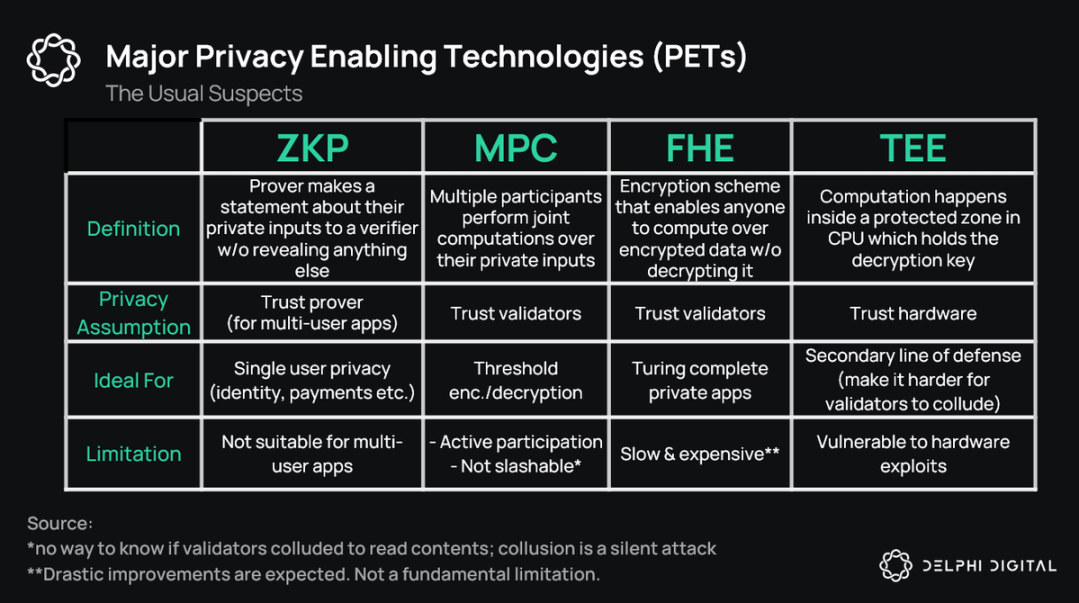Beyond ZKP? A quick look at 5 potential projects for fully homomorphic encryption
- WBOYWBOYWBOYWBOYWBOYWBOYWBOYWBOYWBOYWBOYWBOYWBOYWBforward
- 2024-03-16 14:40:07768browse
Compiled by: Luffy, Foresight News
Fully Homomorphic Encryption (FHE) has quickly become a buzzword, and do you know why?
FHE allows calculations on encrypted data without leaking any information, opening up a variety of possibilities for Web3, including but not limited to:
- Confidentiality RWA generation Tokenize
- On-chain identity
- MEV Protect
- Private on-chain medical data
- Make DeFi compliant with data protection and privacy laws

In addition, FHE can also play a role in the field of combining Web3 with artificial intelligence and zero-knowledge proof.
AI models can now leverage data and generate results without accessing the actual input data, ensuring that user queries remain private and secure. This also means that data training can be performed without direct access to the data.
While debate continues over the closed-source nature of the major big language modeling companies, FHE has emerged as a potential game-changer in artificial intelligence.
Many people are debating whether FHE will replace zero-knowledge proofs (ZKP); however, they can coexist. ZKP can be used to generate private proofs, while FHE can handle data processing in smart contracts.
FHE is still in its early stages of development. I will briefly introduce 5 FHE projects with potential.
1) Inco
Inco is a modular confidentiality-as-a-service blockchain that is EVM-compatible L1 and fully supported by FHE .
Inco previously closed a $4.5 million seed round led by 1kx.
Catalysts and Takeaways:
- Providing privacy at the base layer is a strong value proposition that can attract many privacy-focused DApps.
- The introduction of the data availability layer revolutionized the ecosystem of modular projects like Celestia. Layers of secrecy are expected to have similar, if not greater, appeal.
- Partnering with Zama, for which the Polygon co-founder is an advisor, will borrow Ethereum’s security via EigenLayer (actually AVS).
2) Mind Network
Mind is a Zero Trust Layer that provides security and data privacy, designed to facilitate true CrossFi scaling.
Mind has closed a $2.5 million seed round led by Binance Labs.
Catalysts and Key Points:
- Building Internet infrastructure that empowers global citizens to control their own data.
- The testnet is online and incentives may be given to the testnet.
- Powered by Zama.
- The first use case is MindLake, a groundbreaking data storage rollup designed to perform computations on encrypted data on a decentralized platform.
3) Fhenix
Fhenix is the first Rollup-based FHE architecture, designed to solve the problem of performing FHE calculations on L1 due to extensive execution requirements and scalability limitations. challenge.
Catalysts and Key Points:
- Optimistic FHE Rollup can be built on Ethereum without modifying the base layer, which means every smart contract in Ethereum can pass FHE Rollup Solutions enhance privacy.
- Working with Zama to launch fhEVM infrastructure.
- The testnet will be launched soon.
- In my opinion, Fhenix simplifies the deployment of confidential smart contracts, which is critical for developer adoption.
4) Privasea
Privasea is a network that utilizes FHE to ensure privacy and security during AI computing.
Privasea has closed a $5 million seed round led by Binance Labs.
Catalysts and Key Points:
- Genesis NFT details will be announced soon, and holders will be able to receive airdrops.
- Providing a privacy computing FHE solution for DePIN AI, combining all hot spots into a legitimate and promising project, the project tokens may bring high returns.
- Another DApp is being developed for secure and private user verification, ensuring privacy in the KYC process without exposing personal details but remaining auditable when necessary.
- Powered by Zama.
5) Optalysys
Optalysys is building the next generation of computing processing capabilities. I think this is a very promising project and a "shovel" in the FHE field.
Optalysys is focused on the DePIN project, which features a cloud-native technology stack tailored for high-intensity FHE workloads, facilitating FHE scaling in the compute layer.
Catalysts and Takeaways:
- Potential as a shovel.
- Coprocessors (GPU, CPU) address fundamental limitations of electronic systems.
- Optalysys has developed a unique optical computing system that delivers processing power and energy efficiency from the data center to edge computing, supporting all major FHE libraries.
The above is the detailed content of Beyond ZKP? A quick look at 5 potential projects for fully homomorphic encryption. For more information, please follow other related articles on the PHP Chinese website!
Related articles
See more- After reading this article, you will understand everything about Bitcoin, blockchain, and decentralization.
- What are the main characteristics of blockchain technology?
- Analysis of the application prospects of blockchain technology in the field of network security
- How high can Ethereum rise in 2024?
- Will Ethereum rise in 2024? Will it go up to $5000?

